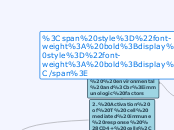1. Genetic environmental and
immunologic factors
2. Activation of T cell mediated immune response (CD4+ cells, interleukin, and tissue necrosis factor)
3. RF antigen/ IgG interaction
4. Immune Complexes deposited into joint space and osteoclasts are activated
5. B and T lymphocytes to stimulate the inflammatory response
6. Angiogenesis in synovium
7. Synovial proliferation causing thickening and fluid accumulation
8. Pannus formation of granulation tissue that is composed of inflammatory cells that erodes the articular tissue.
Acute inflammatory symptoms
Weakness
Fatigue
Chronic Inflammatory Symptoms
Rheumatoid Vascularitis
Mediator:
Release of
TNF, IL-1
Disease onset: occurs at any age,
peak incidence between 50-75 years
old. Women are affected more frequently than males
Cigarette smoking is the strongest risk factor for the development of RA
70-80% of people who have RA have a RF factor which is an antibody that reacts with a fragment of IgG to form immune complexes
Presence of Anti-cyclic citrulline peptide antibodies
Neutrophils and macrophages phagocytize immune complexes releasing lysosomal enzymes that destroys articular cartilage
9. Destruction and calcification of articular
cartilage and underlying bone
Localized joint inflammation
Permanent hand deformity
Swan's neck
Boutonniere
joint pain
Joint swelling
Joint redness
Morning Stiffness for more than 30 min
Chronic Systemic Symptoms from calcification of articular cartilage
Rheumatoid nodules
